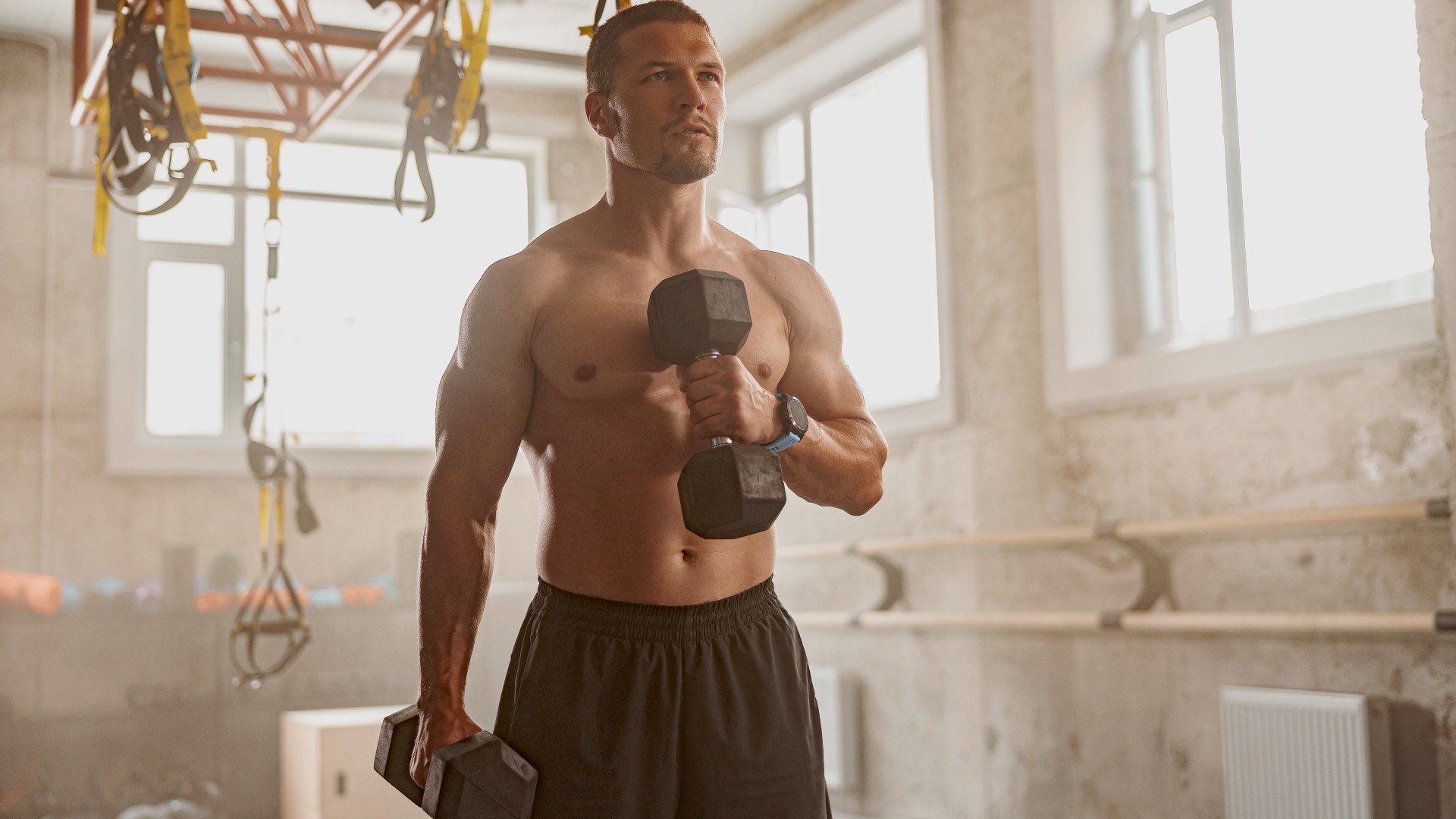
A chest and triceps workout worth its salt will hit your pectoral muscles, anterior deltoids (the fronts of your shoulders), triceps and core muscles hard.
This upper-body workout uses five moves to torch these muscle groups and strengthen the upper body alongside your usual strength programs or classes. You can scale it to a time cap that suits you and, best of all, you can modify it to your personal experience level.
We love using barbells for upper-body strength workouts, but you only need one pair of the best adjustable dumbbells to get it done. Bookmark this one for later.
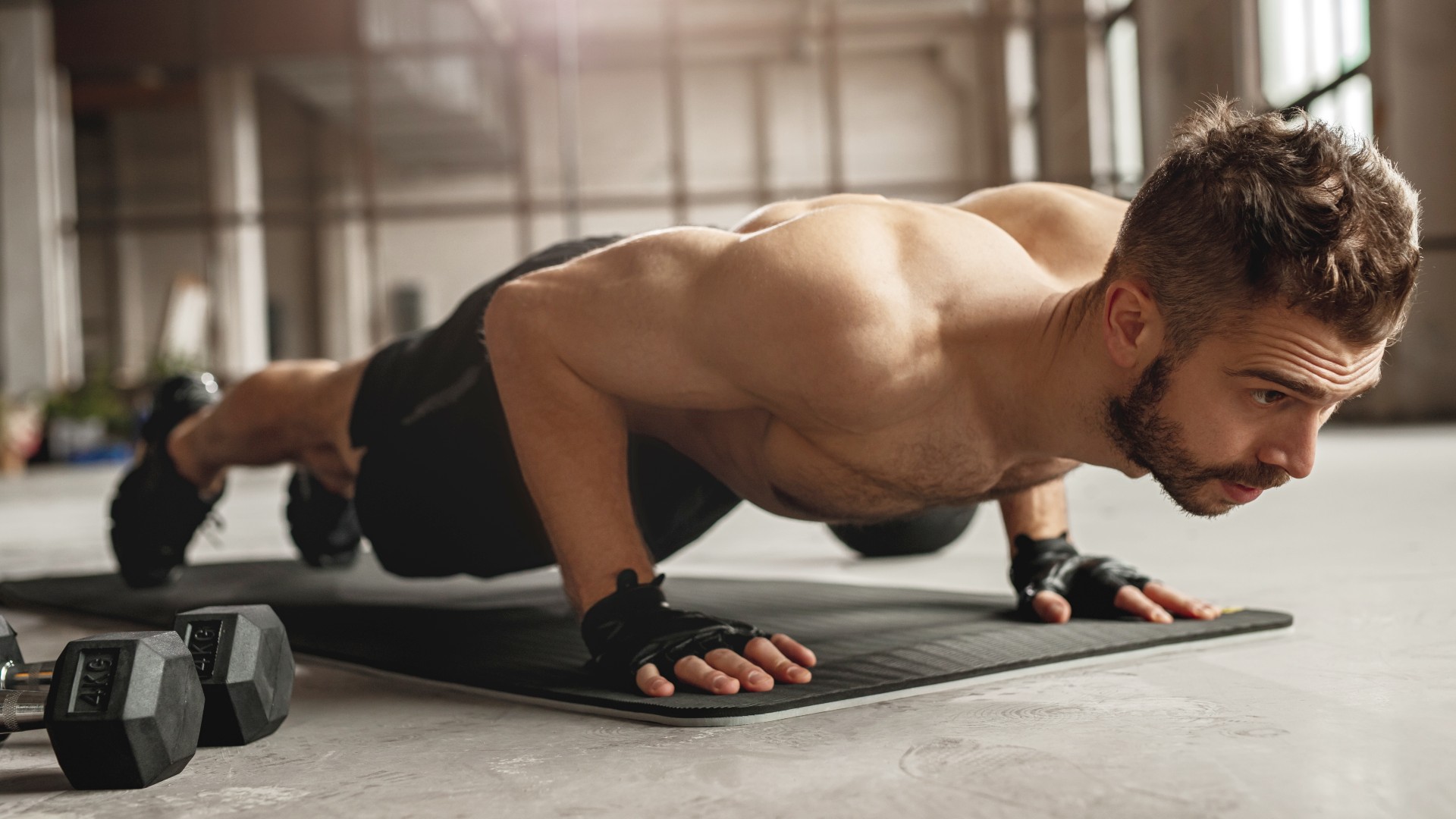
Before we start, remember, building strength and developing muscle definition requires a consistent and balanced diet, ample protein intake, a regular and progressive exercise routine and factors like sleep and stress management (you know, that ‘thing’ called recovery).
Moreover, much of the science tells us that NEAT — shorthand for Non-Exercise Activity Thermogenesis — accounts for the heftiest portion of calorie burn in your day. Basically, standing and walking around more often could boost your metabolism and burn more calories accumulatively than, say, one HIIT workout or strength program.
But while one workout isn’t going to shred muscle or result in instant gains, consistently attacking and progressing your programs could — find out more on progressive overload techniques here, and why it matters.
20-minute, 5-move chest and triceps workout
So, shelve the burpees and try these moves for your chest and tri's instead.
Sign up to get the BEST of Tom's Guide direct to your inbox.
Get instant access to breaking news, the hottest reviews, great deals and helpful tips.
1. Dead hang
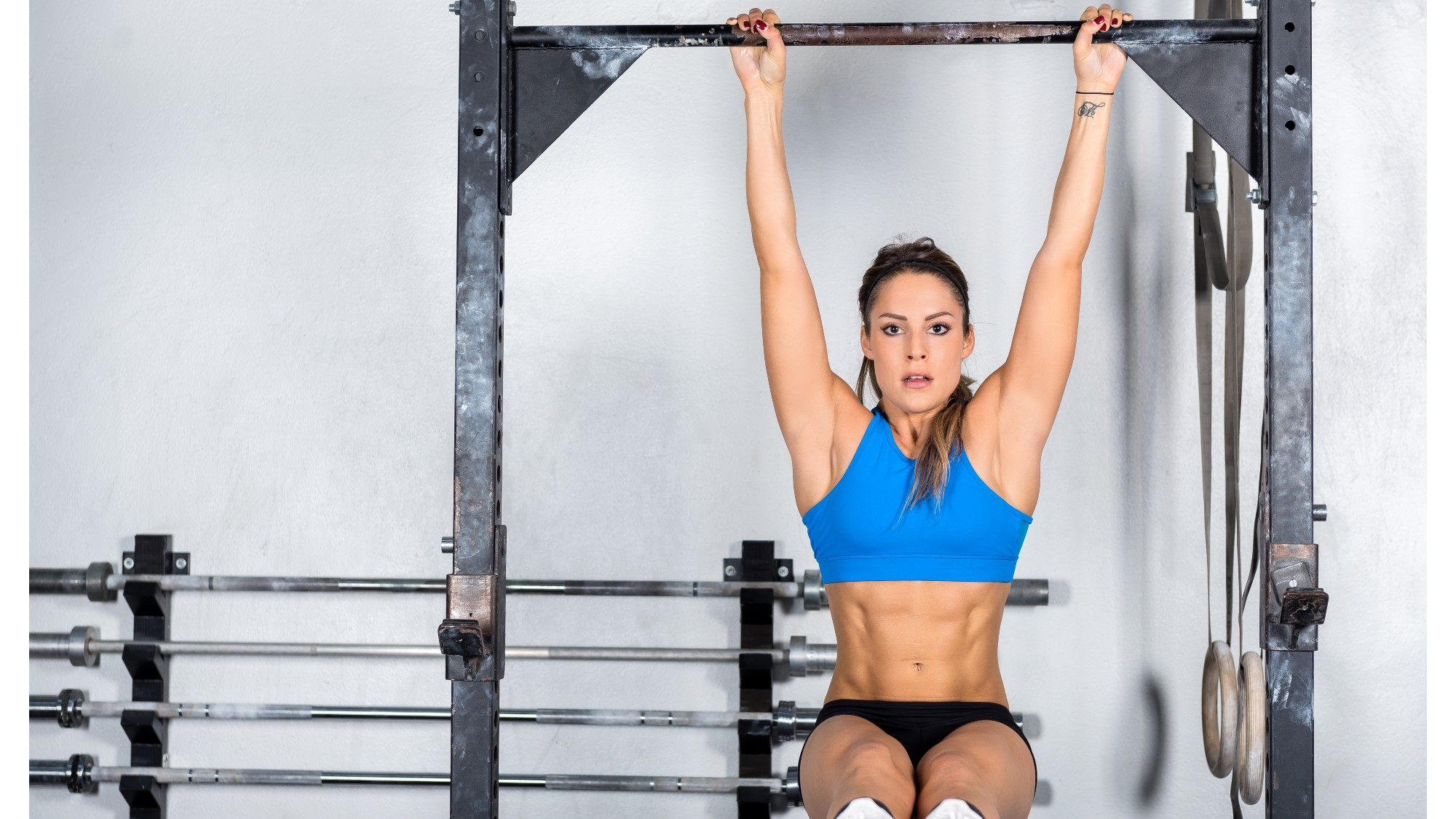
Dead hangs torch your core and arms, including your forearms, biceps and triceps, shoulders and back muscles — latissimus dorsi (lats) and trapezius. The move also develops shoulder and grip strength. You don’t need to flex or extend muscles during dead hangs, so dead hangs use isometric contraction instead.
How:
- Stand underneath a pull-up bar and grip slightly wider than shoulder-width apart
- Wrap your thumbs around the bar and extend your arms
- Tuck your pelvis toward your spine and squeeze your stomach, shoulders, chest and back muscles
- Hang from the bar with straight legs. Keep your shoulders active and slightly pulled back.
2. Hollow hold chest press
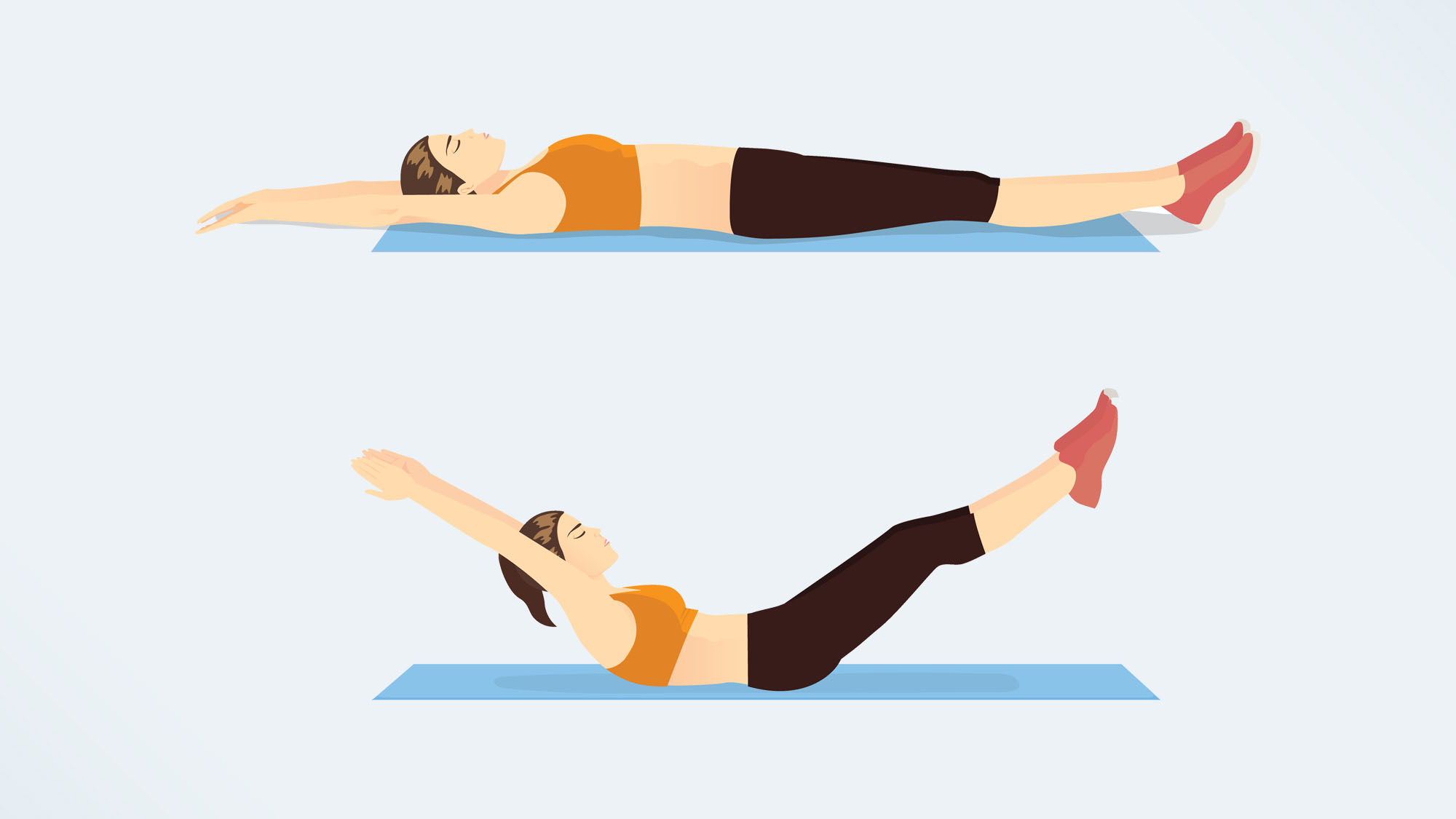
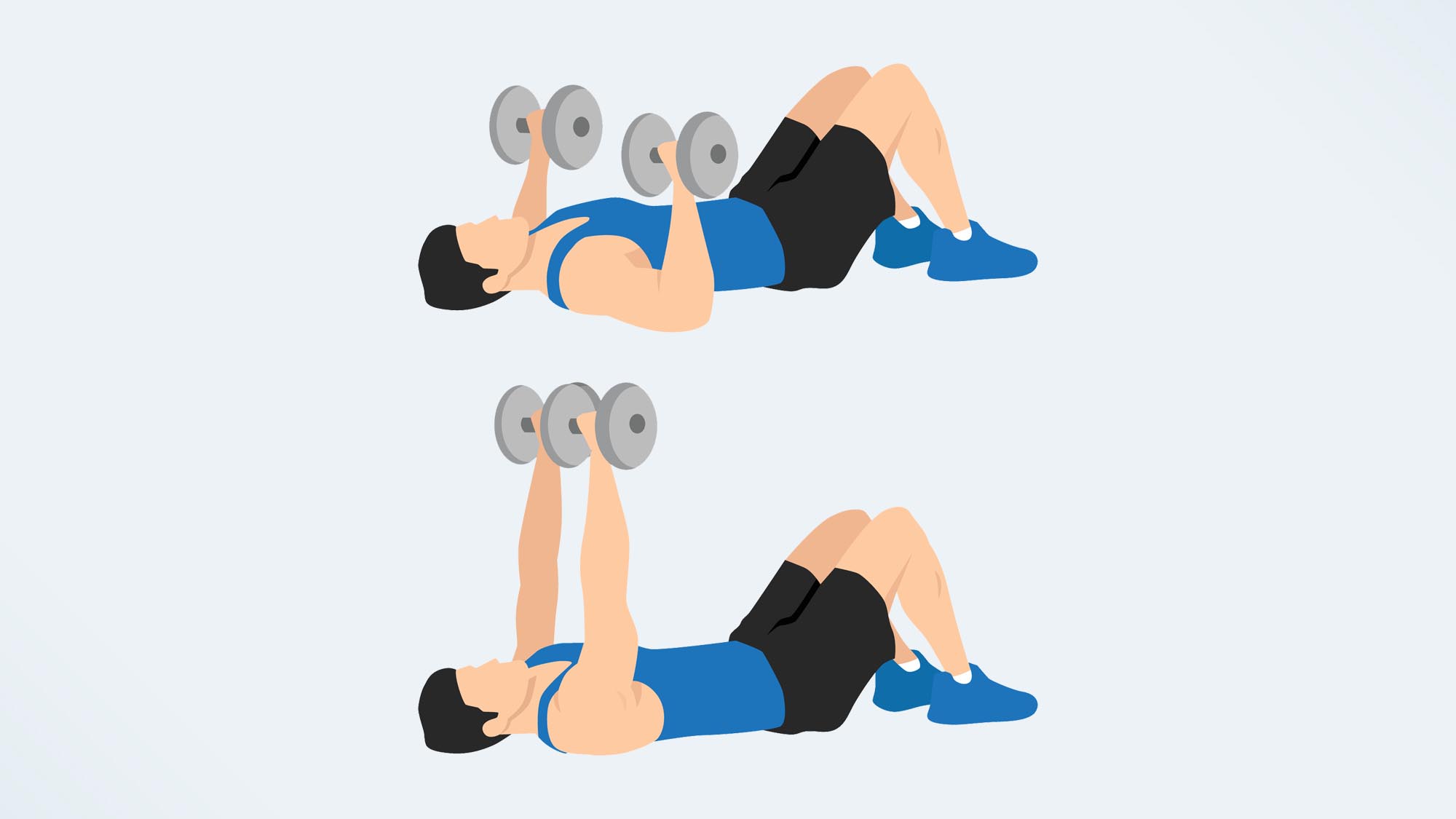
The chest press builds strength and muscle in your pectorals, anterior deltoids, triceps and core muscles through the pushing motion. A hollow hold position requires full-body contraction and builds core stability and strength. Learn how to do the hollow hold and bench press here.
How:
- Create a hollow hold shape by lifting your upper back and legs off the ground, slightly tucking your pelvis toward the spine and engaging your core
- Holding a dumbbell in each hand, extend your arms overhead above your chest
- Bend your elbows and lower your dumbbells toward your chest, allowing your elbows to bend to the sides
- As you exhale, contract your chest and shoulders, drive the dumbbells upwards and lock out your arms at the top.
3. Dumbbell tricep extensions
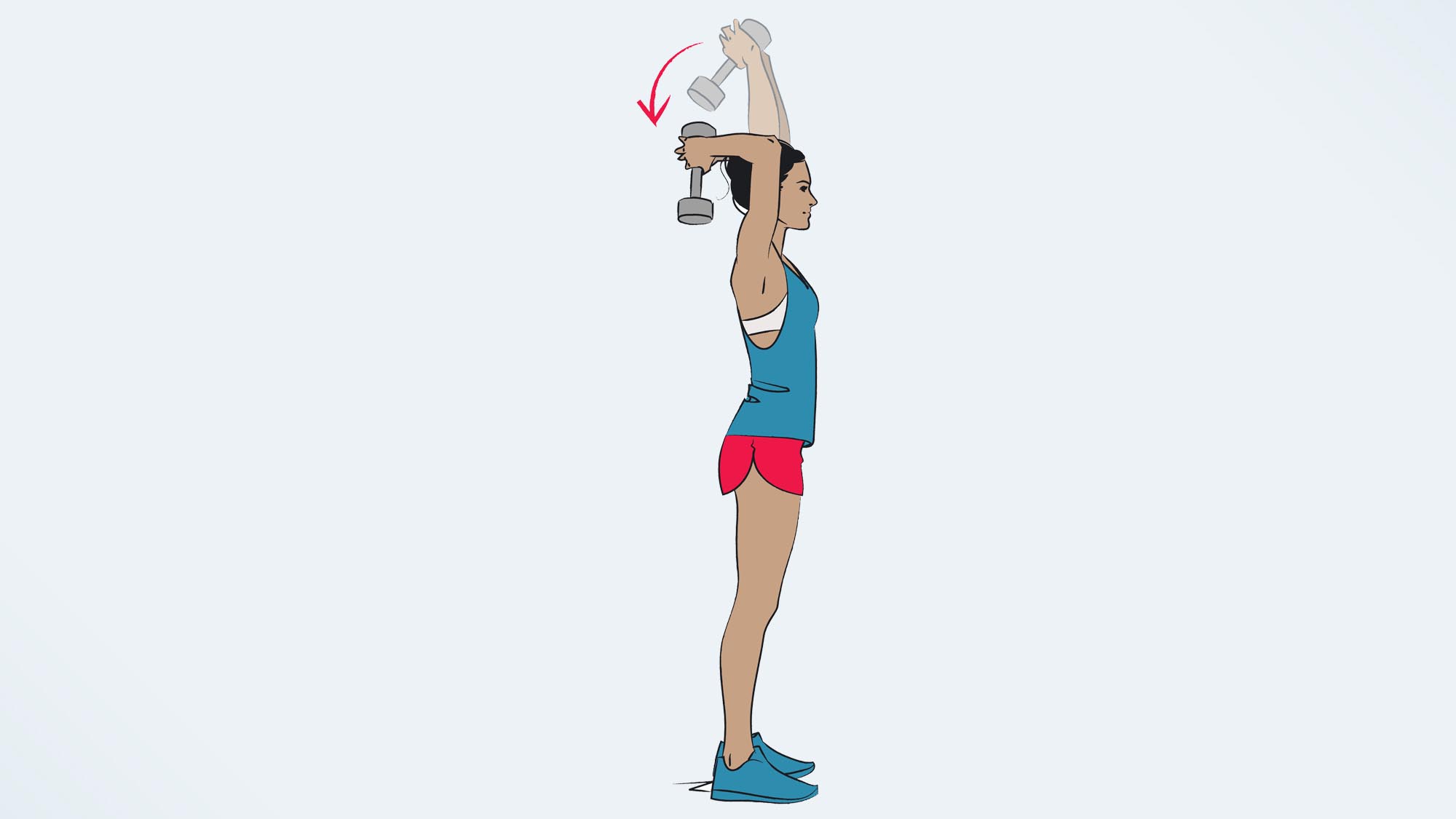
Target and isolate your tricep muscles using tricep extensions, which build tone and definition in your arms and strengthen the muscles that support pushing movements like the chest press.
How:
- Stand with your feet shoulder-width apart, one foot slightly ahead of the other for balance
- Engage your core and stand tall through your spine
- Hold one dumbbell in both hands extended above your head. If you feel tension through your shoulders, lower your arms a little
- Look straight ahead, exhale and bend your elbows to lower the dumbbell behind you
- When your elbows are at a 90-degree angle, slowly raise your arms and return to the start position.
4. Dumbbell deficit push-ups
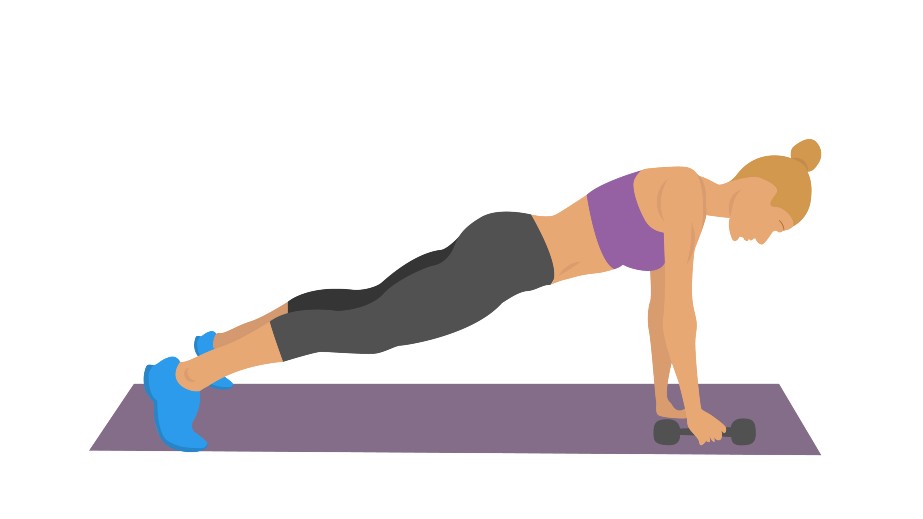
A deficit increases your range of motion at the bottom of the push-up. It’s a progression designed to build muscle and strength by increasing the time muscles stay under tension. The variation requires greater strength and mobility, so approach with your knees down until you can perform one without knees.
Create a deficit by elevating your hands using dumbbells.
How:
- Start in a push-up position with your hands raised on two weights and shoulders stacked over your wrists
- Maintain a straight line from head to toe
- Bend your elbows and perform a push-up. Pause at the bottom
- Press back up to your starting position. Try to lower your chest as close to the ground as possible each rep.
5. Dumbbell Arnold press
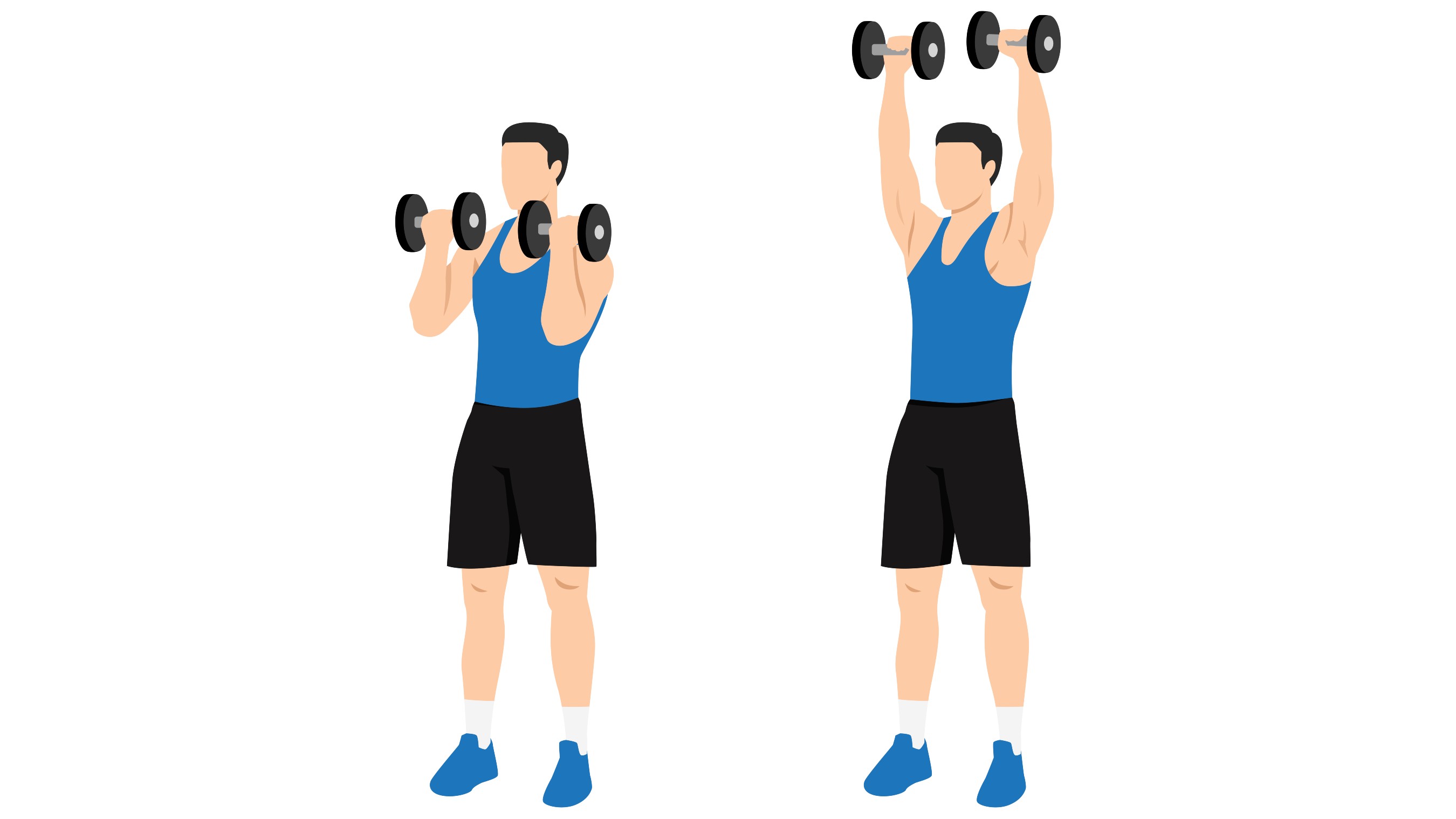
The Arnold press stimulates all three shoulder heads — the anterior, lateral and posterior deltoids. It also works your chest and triceps, similar to the overhead press. Here’s how to do the Arnold press in more detail with a low down on why we love Arnie’s signature move.
How:
- Stand with your feet shoulder-width apart, holding a dumbbell in each hand, with your elbows bent and palms facing toward you
- With power, raise the dumbbells above your head as you rotate your palms out away from your body
- Pause, then reverse the movement back to your starting position
- Keep your core tight and spine tall as you move, without arching your lower back.
Verdict
It’s all about pushing power with this five-move routine, but for a well-rounded upper-body session, we recommend pairing it with a 3-move back and biceps workout.
Complete the upper-body exercises as an EMOM — every minute on the minute. Aim for 8-12 reps of one exercise, finishing with 10-15 seconds left before the next minute starts. Complete 4 rounds, totaling 20 minutes of work, and modify for a shorter or longer workout. Adjust weights to suit your ability so that the last few reps are near failure.
Tricep extensions exhaust the smaller muscles that support bigger lifts like push-ups and bench presses, so we often save them for the last section of a workout. During a 20-minute circuit like this, opt for lighter weights for the isolation exercise and heavier weights for compound multi-muscle moves — the chest press and Arnold press.
It’s time to hit chest and triceps day with a big push.
More from Tom's Guide

Sam Hopes is a level 3 qualified trainer, level 2 reiki practitioner and senior fitness writer at Tom's Guide. She is also currently undertaking her Yoga For Athletes training course. Sam has written for various fitness brands and websites over the years and has experience across brands at Future such as Live Science, Fit&Well, Coach, and T3.
Having worked with fitness studios like F45 and Virgin Active, Sam now primarily teaches outdoor bootcamps, bodyweight, calisthenics and kettlebells. She also coaches mobility and stretching-focused classes several times a week and believes that true strength comes from a holistic approach to training your body.
Sam has completed two mixed doubles Hyrox competitions in London and the Netherlands and finished her first doubles attempt in 1:11.
